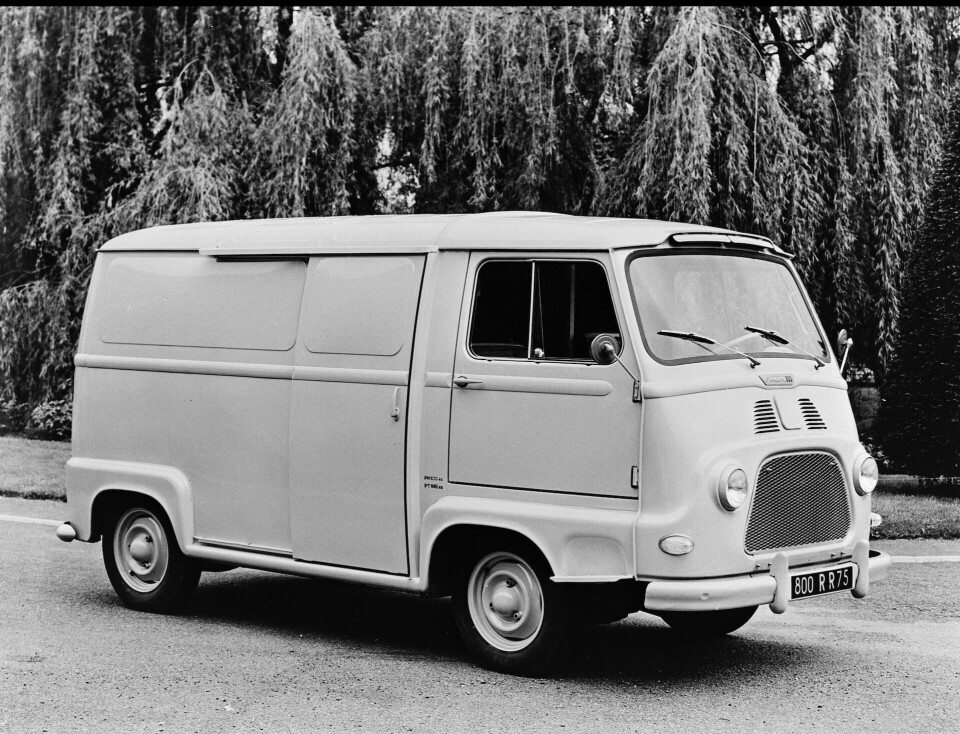
First sight: Renault Estafette Concept
The legendary workhouse returns for a BEV era
The Renault Estafette is tradesman’s classic, a workhouse that, in various forms prowled the streets of France and other countries for decades. It was introduced in 1959, with a Dauphine engine, transmission, and front wheel drive. Its boxy form, low loading height and emphasis on economy and practicality made it an instant classic, produced until 1980 in France, a bit longer in other countries. The name, which sounds like a French pastry, was actually derived from the Italian word Staffeta, which means courier.

Now the Estafette has returned, introduced by Renault and developed by Flexis, a joint venture between Renault Group, Volvo Group and CMA CGA Group and built on the FlexEVan electric platform developed by Ampere.
“We are very excited about helping to bring to life the vision that Renault Group and its partners Volvo Group and CMA CGM Group have come up with to revolutionise urban logistics”, noted Philippe Divry, CEO of Flexis. “(It will) make operations more sustainable, safer, city-friendlier, driver-friendlier and neighbour-friendlier. Estafette Concept is the first example of what electric utility vehicles will look like tomorrow: purpose-engineered to drive in cities, compact, connected and built for fully sustainable delivery services.”
The concept is designed for urban environments with a length of 4870 mm, and a width of 1920 mm which will fit in a standard parking place (5000 mm long). For comparison, the Renault Kangoo has approximately the same footprint (4910 mm x 1860 mm). The turning radius is tight, just over 10000 mm, roughly the same as the Clio. But of course, the height, at 2590mm is significantly greater than its automobile cousins, and the original Estafette, which was 1900mm high
The exterior design concept is to make the Estafette a friendly, if chunky, presence in the city. Sandeep Bhambbra, chief designer, advanced design and concept cars, Ampere, summed the design up this way: “The Estafette Concept intends to change the way people perceive vans in cities, while applying and adapting the same interior and exterior concept across the line-up. Vans will no longer be anonymous shapes: they will be endearing, expressive and come in eye-catching pop colours.”
Renault sums it up more succinctly: “Think Smeg fridge meets plush toy.”
And indeed, the Estafette does have a product design feel as well as a toy-like cuteness. The mass of the truck is predictably boxy, but with smooth sides and curved surfaces at corners.
Round headlights continue the friendly-theme, somewhat offset by the brow that house the turn signals just below the windscreen. In a similar sense, the windscreen continues the curved theme, but is divided into three panels, a “triptych” as Renault calls the ensemble. These windscreens allow for better views for the driver at corners.
The driver and delivery-side doors are sliders, while the rear is a roll-up hatch. This door configuration allows for efficient loading at the rear, while deliveries are made through the side doors.
The interior is designed for a professional driver connected to a corporate network that monitors his/hers location, route completion, vehicle dynamics, etc. In turn, the driver can connect with a dispatcher and GPS, map services, and route guidance amoung many other services. Doubtless, there will be some autonomous features included at some point, although that is not a centerpiece of Renault’s presentation here.
The colour scheme is a mix of professional (‘helium grey’) and playful (‘tropical yellow’). Certainly a vast number of fun colour schemes have yet to be imagined, but given the Estafette’s fun ethos and toy-like shape, they will not be hard to find in design departments at Renault and beyond. Imagine if SMEG had a fleet of Estafettes in their bespoke retro colours. Fun indeed.






























